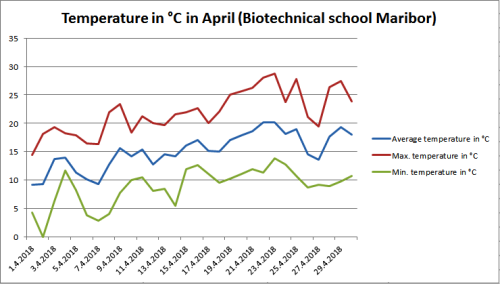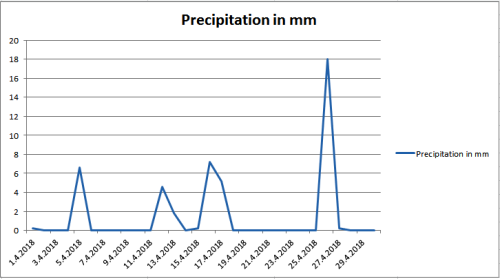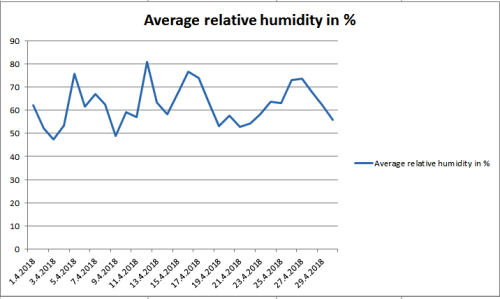... newer stories
Samstag, 19. Mai 2018
Hamburg
beekids, 20:45h
Students of the 1st year, studied the city of Hamburg at the geography course.
They searched information about the position and the size of the city, the number of the population, their legal system, compared the population growth in Hamburg and Maribor, found the proportion of the population by sex, compared the natural increase in both cities, learned the structure of the population in Hamburg, learned the economic and media power of Hamburg , talked about tourism in Hamburg, met the path of the river Laba (Elba) from the source to the estuary and met the new city district of Hamburg (Hafencity).
They quickly found out that Hamburg is one of the most important cities in Germany, even in Europe. The population is almost as much as in the whole of Slovenia. In Hamburg, there are more men than women living in, and the opposite is true in Maribor. The natural increase is positive in Hamburg, which means that the population is rising. In Maribor, the natural increase is extremely negative.
Hamburg is economically very powerful. The main drivers of development are the port, which is the third largest in Europe, the aviation industry, heavy industry (steel, aluminum and copper) and rapidly developing tourism. It is very strong banking, which has a long tradition in the city. Media (printed, music, TV and radio) are also important in the city.
In order to make it easier for students to understand why Hamburg has evolved so quickly through history, the Labo (Elba), which is the main culprit for the boom of the city itself, had to learn about it.
In the end, they found out the part of Hamburg, which is probably the most famous one - Hafencity. Hafencity is an example of the modern development of the city, where the residential and business part intertwines. The main focus is on sustainable development and the use of modern technologies.
Considering what the students saw and heard about Hamburg, we could say that this is a very important place. But this is not a classic metropolis (concrete, concrete and concrete again), here you have the feeling that homeliness and modernity with a lot of greenery intertwine in one place. This can be confirmed by students attending an exchange in Hamburg.
hamburg_ang_verzija (pdf, 1,800 KB)
They searched information about the position and the size of the city, the number of the population, their legal system, compared the population growth in Hamburg and Maribor, found the proportion of the population by sex, compared the natural increase in both cities, learned the structure of the population in Hamburg, learned the economic and media power of Hamburg , talked about tourism in Hamburg, met the path of the river Laba (Elba) from the source to the estuary and met the new city district of Hamburg (Hafencity).
They quickly found out that Hamburg is one of the most important cities in Germany, even in Europe. The population is almost as much as in the whole of Slovenia. In Hamburg, there are more men than women living in, and the opposite is true in Maribor. The natural increase is positive in Hamburg, which means that the population is rising. In Maribor, the natural increase is extremely negative.
Hamburg is economically very powerful. The main drivers of development are the port, which is the third largest in Europe, the aviation industry, heavy industry (steel, aluminum and copper) and rapidly developing tourism. It is very strong banking, which has a long tradition in the city. Media (printed, music, TV and radio) are also important in the city.
In order to make it easier for students to understand why Hamburg has evolved so quickly through history, the Labo (Elba), which is the main culprit for the boom of the city itself, had to learn about it.
In the end, they found out the part of Hamburg, which is probably the most famous one - Hafencity. Hafencity is an example of the modern development of the city, where the residential and business part intertwines. The main focus is on sustainable development and the use of modern technologies.
Considering what the students saw and heard about Hamburg, we could say that this is a very important place. But this is not a classic metropolis (concrete, concrete and concrete again), here you have the feeling that homeliness and modernity with a lot of greenery intertwine in one place. This can be confirmed by students attending an exchange in Hamburg.
hamburg_ang_verzija (pdf, 1,800 KB)
... link (0 Kommentare) ... comment
Meteorological report for April (Maribor)
beekids, 20:40h
Is April spring or summer month? This question arises us because of high temperature in the second half of the month. The difference between the highest (23th April) and the lowest (2nd April) measured temperature in the month was as high as 28.8 °C.
The average monthly temperature was also significantly higher than the average of the period from 1981 to 2010 – it was 15,14 °C, and it was 4,34 °C higher than the long-term average. The long-term average for April is 10.8 °C in Maribor. However, if we compare the average temperature of the second half of the month with the average of the period from 1981 to 2010, it was found that it was higher by as much as 13.77 °C.

In April, the daily average temperature was only four times below the average of the period from 1981 to 2010 (10.8 °C). The maximum temperature was twenty times above 20 °C, thereof eight days above 25 °C. The lowest temperature in April was 0 °C, and the highest temperature was 28.8 °C. In the first four months, the average temperature was 0.39 °C higher than the long-term average.
Precipitation during April was less than average. The measuring device detected 44 mm of precipitation, which is less than as long as the long-term average (60 mm of precipitation). In the first four months, was 64.4 mm more precipitation than the long-term average.

The average relative humidity in April was 62.22 %, which is 15.38 % less as in March. This was expected due to less precipitation.

The average monthly temperature was also significantly higher than the average of the period from 1981 to 2010 – it was 15,14 °C, and it was 4,34 °C higher than the long-term average. The long-term average for April is 10.8 °C in Maribor. However, if we compare the average temperature of the second half of the month with the average of the period from 1981 to 2010, it was found that it was higher by as much as 13.77 °C.

In April, the daily average temperature was only four times below the average of the period from 1981 to 2010 (10.8 °C). The maximum temperature was twenty times above 20 °C, thereof eight days above 25 °C. The lowest temperature in April was 0 °C, and the highest temperature was 28.8 °C. In the first four months, the average temperature was 0.39 °C higher than the long-term average.
Precipitation during April was less than average. The measuring device detected 44 mm of precipitation, which is less than as long as the long-term average (60 mm of precipitation). In the first four months, was 64.4 mm more precipitation than the long-term average.

The average relative humidity in April was 62.22 %, which is 15.38 % less as in March. This was expected due to less precipitation.

... link (0 Kommentare) ... comment
... older stories